NEW ZEALAND
6 Nov 2024
Technical Fitout set to commence at Christchurch’s The Court Theatre
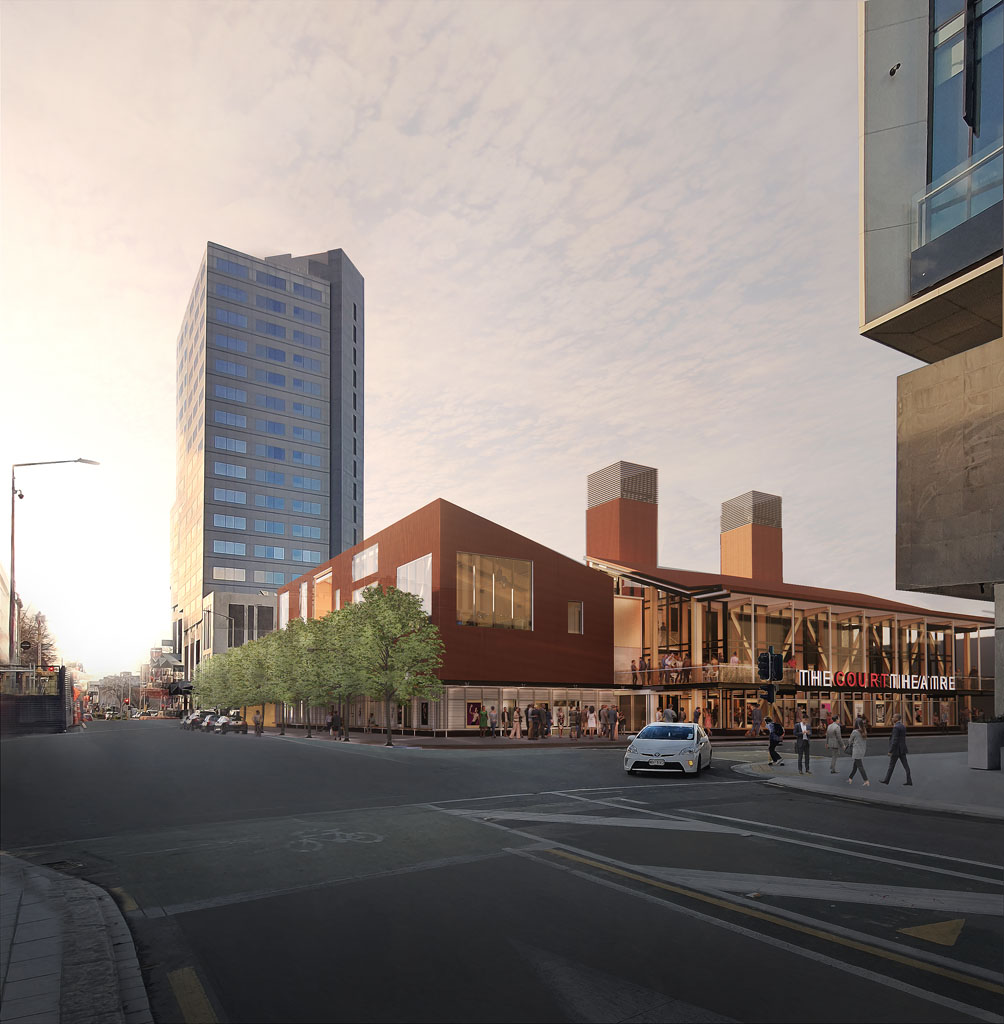
Subscribe to CX E-News
From a ruin, to a shed, to a custom designed full production house
The Court Theatre will celebrate a landmark moment at the end of the year as they move into their long-awaited, purpose-built home in the heart of Ōtautahi Christchurch. The new three-storey Court Theatre is being built on the corner of Colombo and Gloucester Streets, part of a Performing Arts Precinct, one of the anchor projects in the Christchurch Central Recovery Plan.
The $56 million theatre comprises a 377-seat main playhouse auditorium, a 120-150-seat studio theatre, front-of-house facilities and is a full production house, funded in partnership with Christchurch City Council.
Recently announcing their first exciting season commencing May 2025, we spoke to Ross Gumbley, Artistic Adviser/Lead Director, and Flore Charbonnier, Transition Project Manager. They describe the ups and downs of the thirteen years since the original Court Theatre was irreparably damaged in the 2011 earthquake and their technologically ambitious vision for the future.
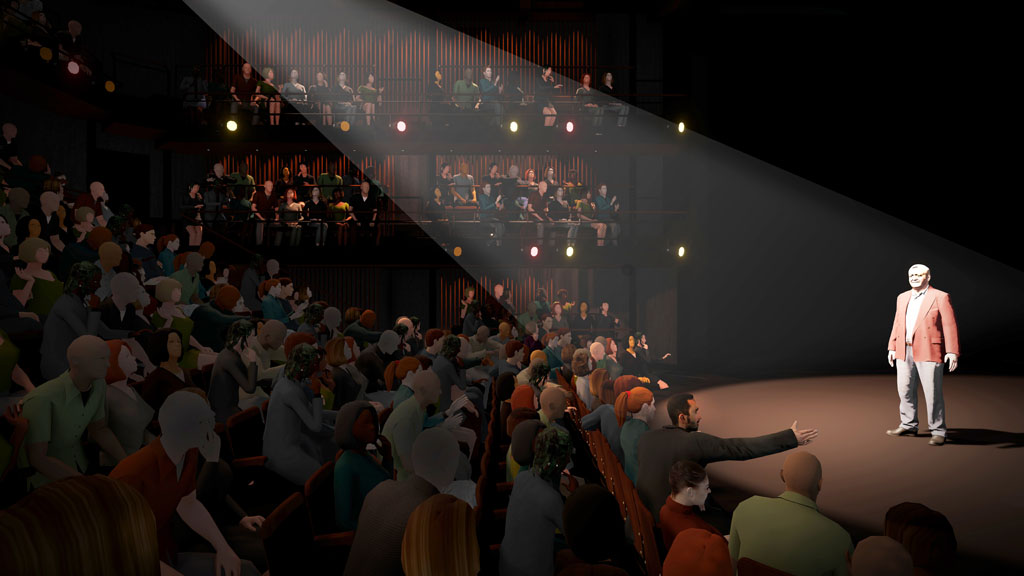
The Start of the Ride
Forced to leave their home of 35 years, The Court Theatre Trust initiated a fundraising campaign to construct new facilities at a location in Addington, about 15 minutes drive from Christchurch city centre. Thanks to the generous support of donors, The Court moved to a temporary facility, affectionately dubbed ‘The Shed’ due to its original purpose as a grain storage silo. They miraculously opened to the public in December of the same year after a sixteen-week build. Ross recalls, “It was a heady time and a rushed move, but The Shed was a lifeboat for us.”
With the many challenges the temporary solution posed, there came opportunities. Ross smiles wryly, “There is nothing like designing a theatre space to inform your next design! Working out of The Shed made us really think about why the original Court Theatre had been so successful. We’ve been going since 1971 so obviously something was working and we realised it was the intimate spaces that had shaped our theatre company’s development over the years. The audience were so close that they were swept up in the performance. At The Shed a 16 metre proscenium opening forced the audience away.”
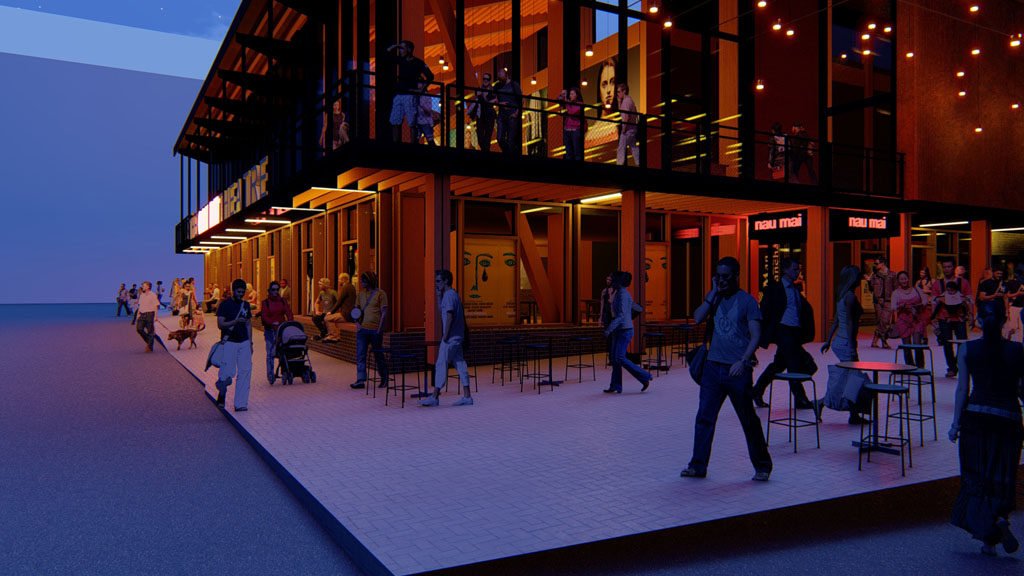
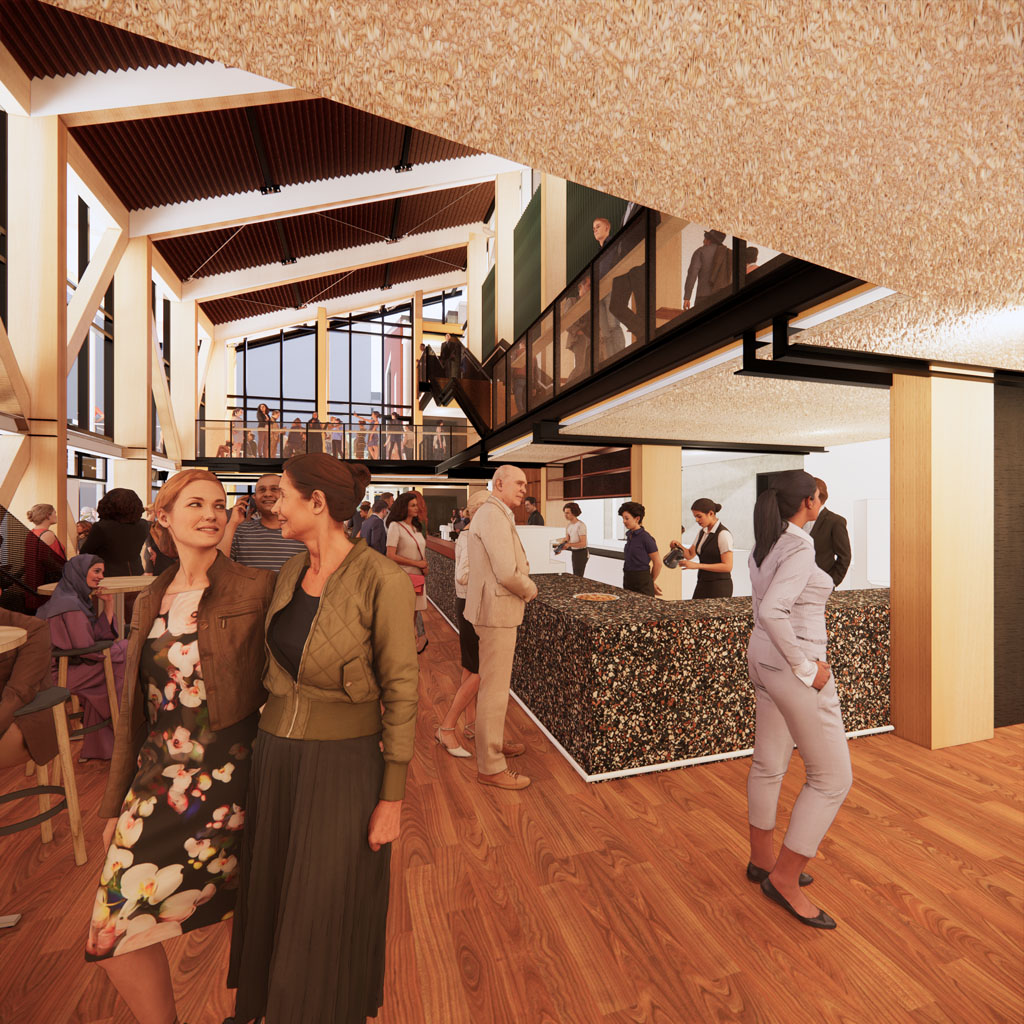
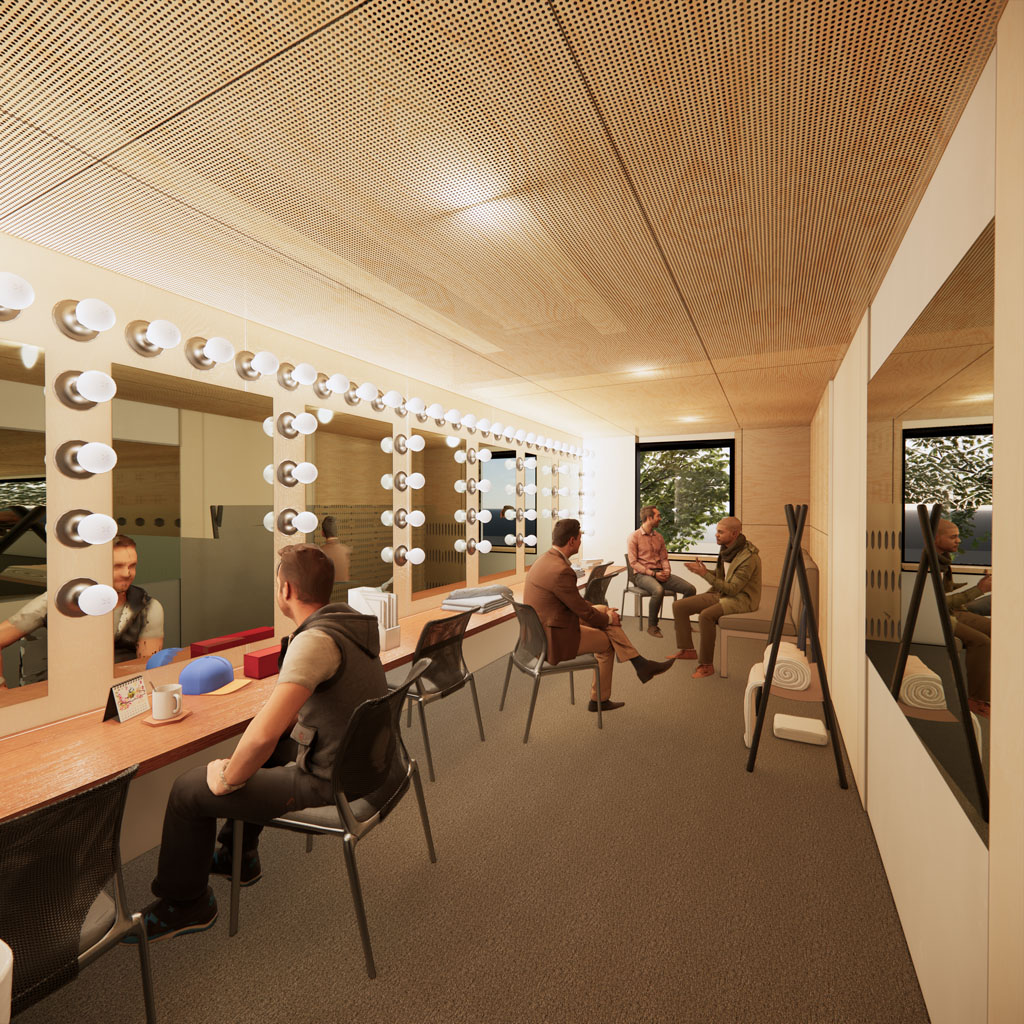
Creating an intimate experience became the driver for the project team tasked with designing the new theatre and they used the years spent ‘camping’ in The Shed to conduct extensive research. Ross was especially influenced by UK theatre producer Iain Macintosh’s book ‘Architecture, Actor and Audience’, “Iain was fascinated by the different responses to the same performances whilst touring and concluded that theatre architecture was vital to the success of a performance.”
The team spent time with Sydney Theatre Company, as well as utilising their extensive contacts in the UK to visit numerous theatres. They compiled a wish list and realised that all the concepts that they wanted to ‘pinch’ had been designed by the same architects, globally renowned Haworth Tompkins, “Unbelievably we got an immediate introduction and from that point everything just seemed to fall into place. After what we had been through following the earthquake, it was like a torch in the darkness.”
Haworth Tompkins led the project from concept design before handing over to New Zealand-based practice Athfield Architects during preliminary design. During detailed design, the two architect companies and The Court team collaborated with Charcoalblue who consulted on the technical facilities design.
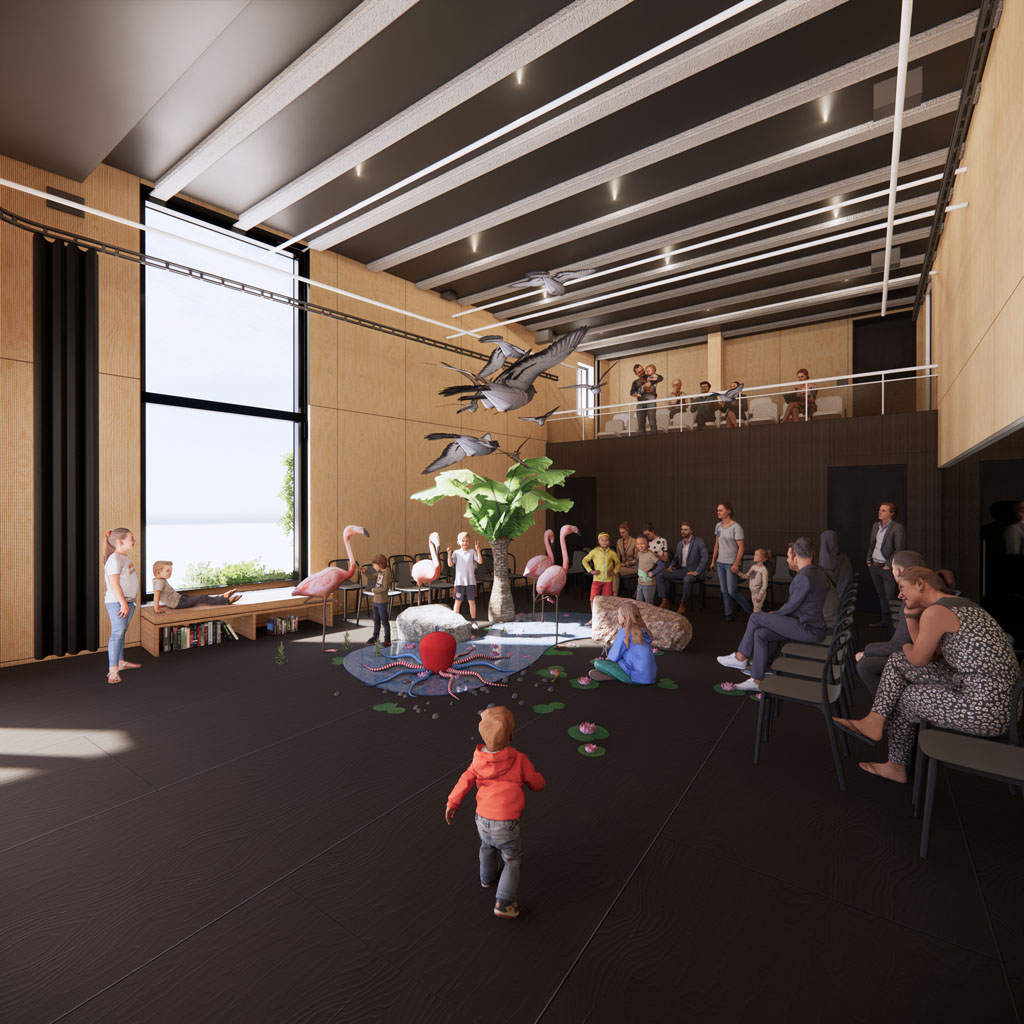
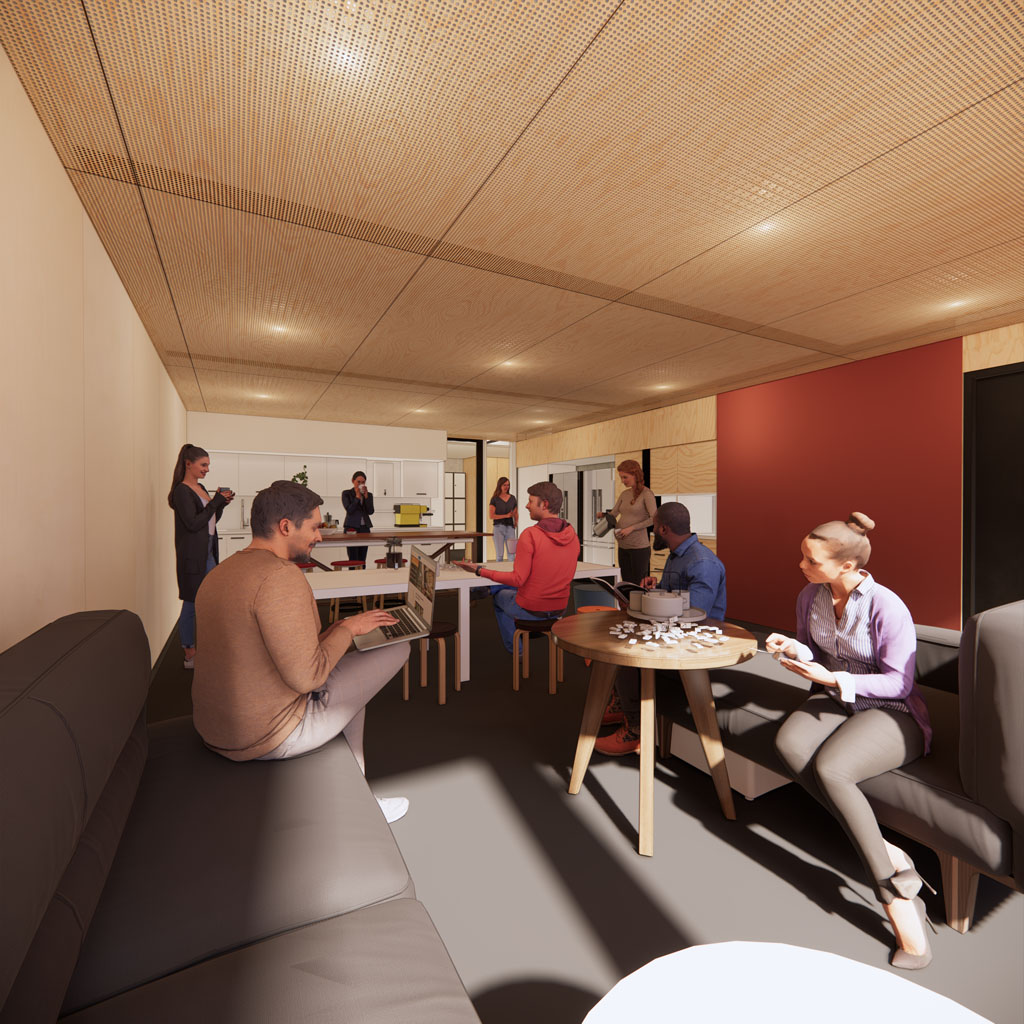
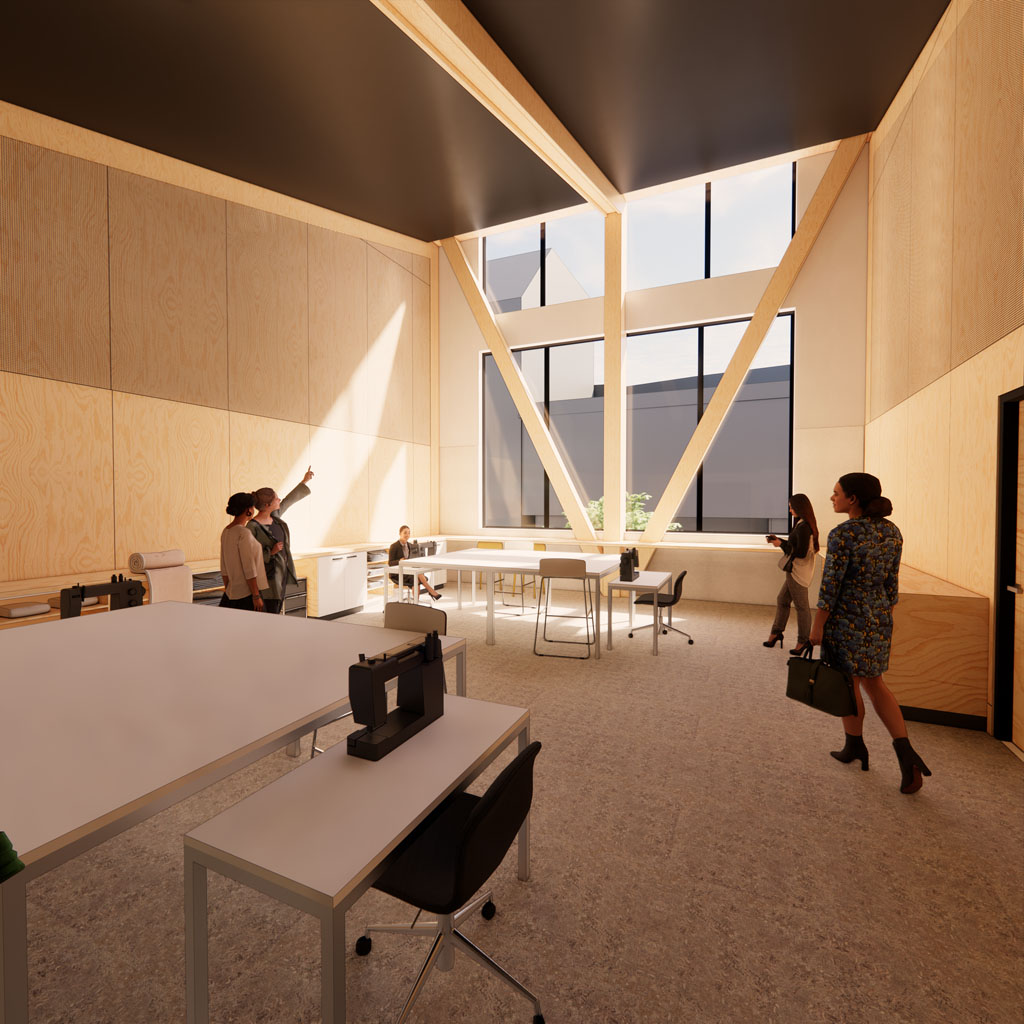
The Worst Time in History to Build a Theatre – or Not?
The team began the design process just as New Zealand went into lockdown. Initially thinking this would be a disaster with two UK based companies in the mix, it turned out to be a positive experience for all. Flore explains, “The sense of crisis meant everyone simply parked their egos at the door. We established a 24/7 work regime, meeting at seven in the morning or seven at night. We would discuss issues before we went to bed in NZ and wake up the following morning to find that somebody in the UK had found a solution and there was a new drawing in the inbox. It was incredibly efficient and a reflection of the strong relationship between the Council, The Court Theatre, our architects and the wider consultant team.”
An equally incredible achievement was achieving everything on the initial rider even with supply chain issues and increased construction costs. Ross reflects, “When you have been without a studio theatre for a decade, or are using a rehearsal room with dodgy acoustics, or splitting the company and rehearsing off site, you end up with a pretty extensive wish list. We were committed to providing our actors and creatives with the very best.”
“The budget has certainly creaked and we have responded by sucking the theatre in. The footprint has compacted and the building is working really hard. There is no fat in the design as you can tell when you see the kilometres of cabling and pipe work running through the walls.”
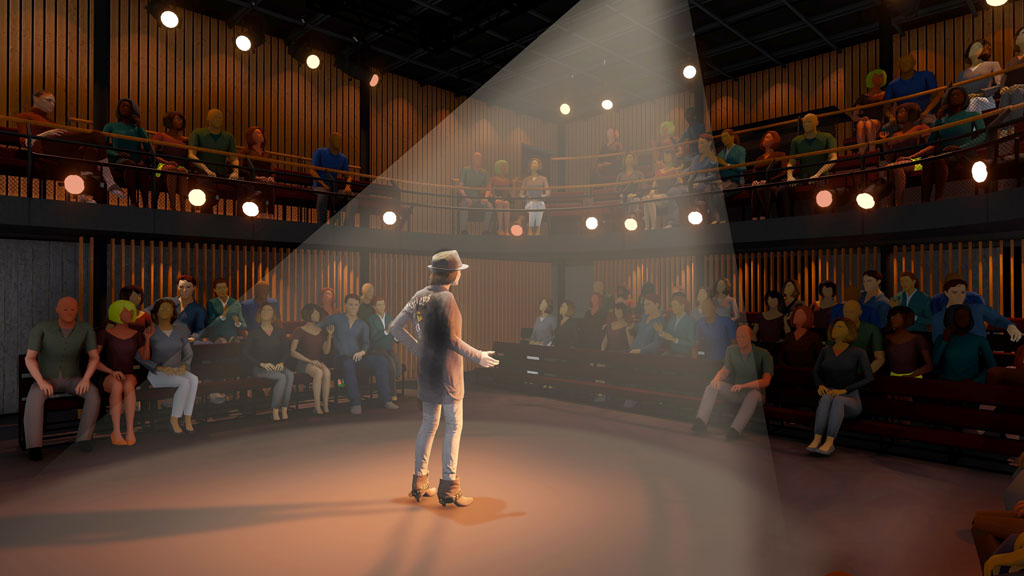
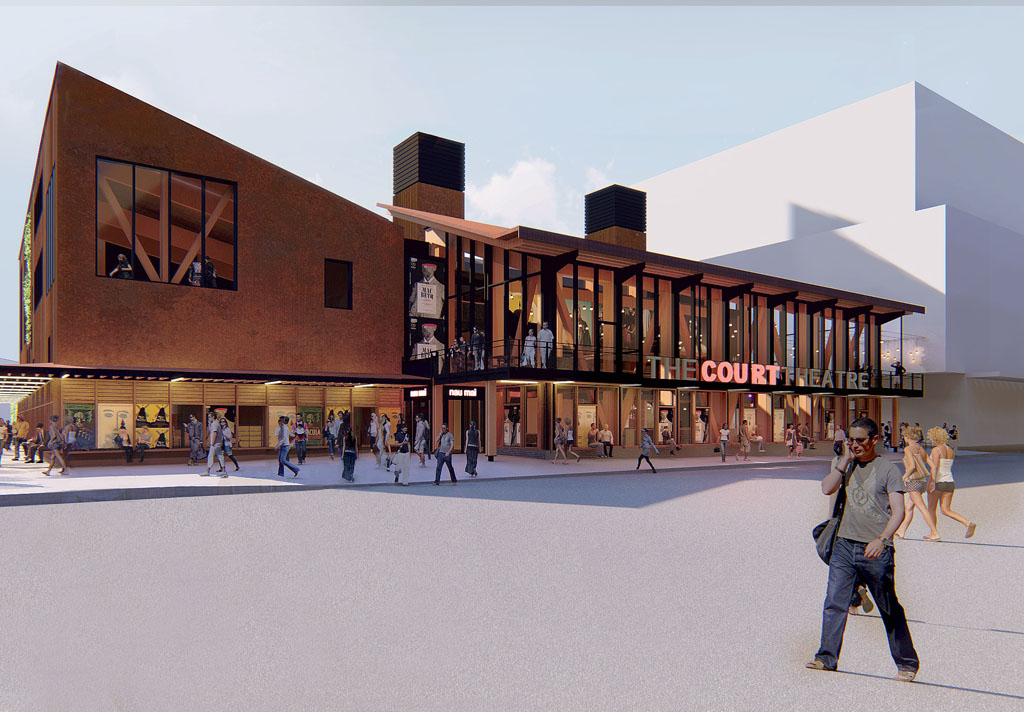
The Technology – No Holes Barred
Focused on intensifying the actor and audience relationship, the heart of The Court Theatre is the 377-seat Stewart Family Theatre, with three levels of seating tightly wrapped around a semi-thrust stage, with high levels of flexibility and deep integration of technical facilities.
The stage engineering system, supplied by Australian company The P. A. People, includes a modular stage floor which can be adjusted to a range of levels with under stage access to the wings. The seat mounting is cleverly integrated to allow the first four rows of seating to be removed as required, bringing the audience even closer to the action. Ross is particularly excited about the accompanying automated flying system with electric winches, “We are going from people running around in the rafters, essentially with fishing rods, to the first fully automated system in New Zealand. It will transform our production design.”
Ross is also looking forward to moving to the new rehearsal room, “The rehearsal room in The Shed had the most horrendous reverb, meaning actors would think they were adequately projecting their voices, until we moved into the theatre. We want to have exactly the same signals in the rehearsal room as in the main stage and have recruited Jon Farren from Marshall Day as our acoustic consultant to advise our contractor Hawkins.”
Other suppliers include L-Acoustics, working with local company BounceNZ, on audio and the new PA systems for both auditoria. Lighting procurement has been complicated by the advances in technology during the theatre’s planning stages and the request for tenders for lighting has only recently been released. The team spent three months working with distributors testing out options, “We were looking at a 50:50 split between tungsten and LED but now we will be almost exclusively LED since it has evolved so much.” Flore adds that some halogen lamps will be coming with them from The Shed until they reach end of life.
The theatre is also leaping head-first into the age of digital communications. Flore explains, “Technical Manager Giles Tanner has worked extensively with the consultants to achieve next level connectivity of the building with all the audio-visual and lighting capable of talking to each other. For networking and control we are using LS Group (lighting) and Barton Sounds (AV).”
Ross reflects that the technical design has been hugely influenced by guidance that Roger Watts, Principal Architect at Haworth Tompkins shared way back at the beginning, “He advised us to remember that the majority of people who will work in this building haven’t even been born yet. We’ve tried to give the future as many options as possible by providing rudimentary rigging power and data in all the spaces.”
The theatre company will take over the building for completion of the technical fitout and transition of their operations in December.
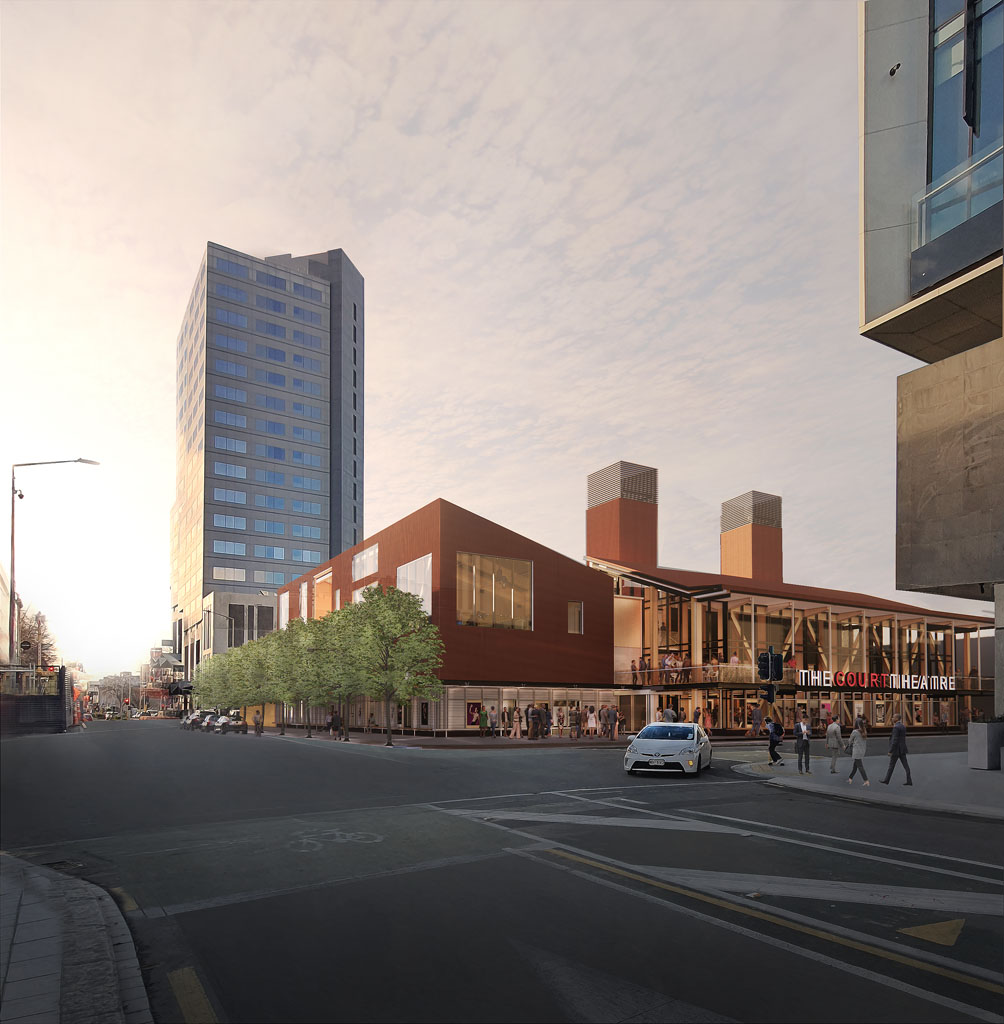
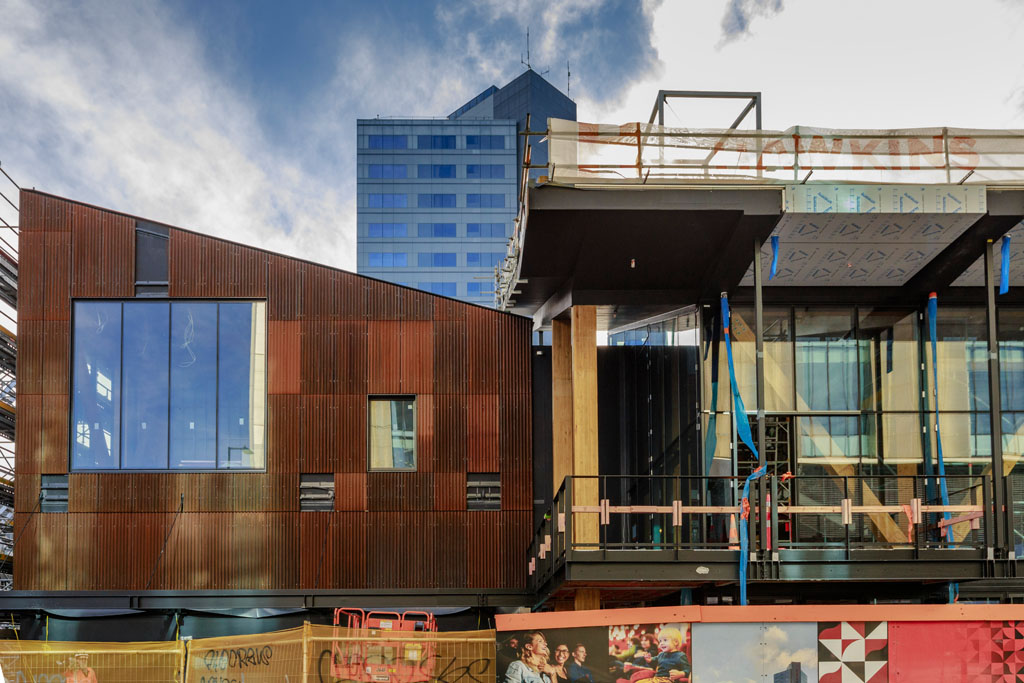
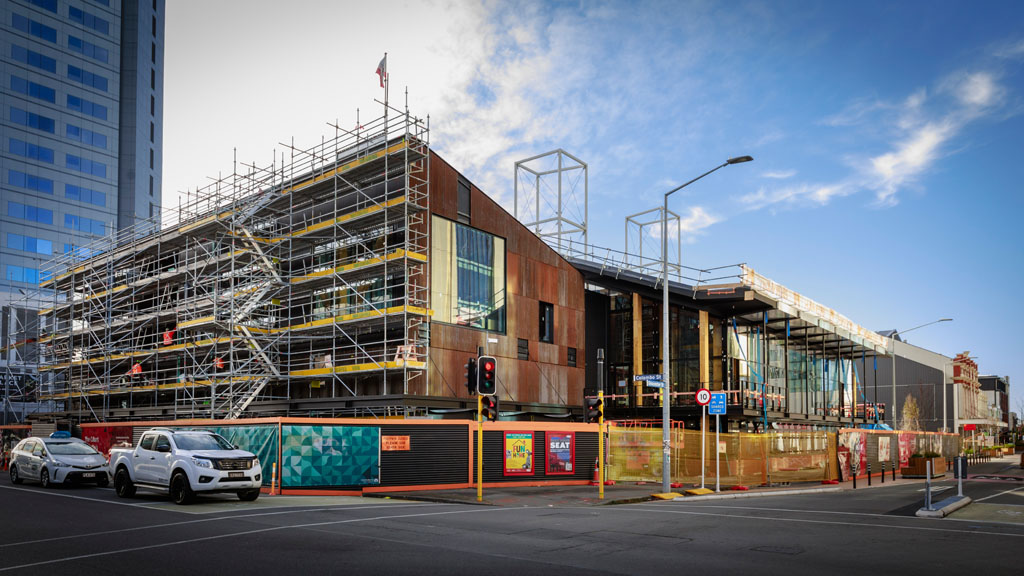
Bringing the Community in, Literally
All aspects of the working theatre, including set-building, costume-making and rehearsals, will be based on-site. With plans from the start to make these traditionally back-stage activities more visible to the public, the design incorporates a panoramic window that opens onto busy Columbo St, “We have purposely located the set assembly and painting dock so that they can be clearly seen from the street, hoping that this will entice passersby in for a coffee and of course to our ticket office!”
The Court Theatre will also run an extensive education programme targeting everyone from ages five and up. Flore is passionate about training and nurturing the next generation, “We know that our performers and creators are the best in the business and so are the perfect people to provide those training opportunities. We want to offer young people a sustainable career path and we hope that our world class facilities and equipment will encourage our talented youth to remain in New Zealand and not go overseas. The programme will be hybrid, encouraging participants to train across all areas of the industry including audio-visual and lighting technology, stage and costume design, and production.”


The End of One Journey, the Start of Another
The theatre is set to open on May 3 2025, almost 53 years to the day since the first production. For Flore and Ross this will be the end of an epic journey that started with a strong earthquake. Flore may smile when she says that the highlight for the administrative staff is going to be views of the outside world after having spent over a decade working in Portacoms, but you can see how emotional this journey has been for both of them. Ross sums it up, “We are truly thankful to the Christchurch City Council for their support and faith in us and helping make this happen. We are going from a rehearsal studio where we can still see our breath at three in the afternoon to what I believe is going to be the best theatre space in Aotearoa.”
Photos courtesy of Christchurch City Council
Subscribe
Published monthly since 1991, our famous AV industry magazine is free for download or pay for print. Subscribers also receive CX News, our free weekly email with the latest industry news and jobs.






